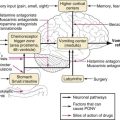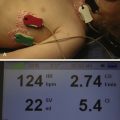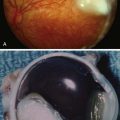Hair transplantation has become an increasingly sought-after and reliable method for addressing alopecia. While androgenic alopecia is the most commonly treated condition using this procedure, individuals who have experienced facial trauma, burns, or other types of hair loss can also benefit from hair transplantation. With careful patient screening and proper evaluation, the risks of this procedure are minimal, and success rates are typically high. This article covers the causes and pathophysiology of androgenic alopecia, the criteria for selecting the right candidates, and the techniques used during surgery to help healthcare professionals enhance patient outcomes.
Objectives:
- Identify the appropriate candidate selection criteria for hair transplantation.
- Implement safe and effective hair transplantation techniques.
- Apply an advanced understanding of hair anatomy and physiology to improve graft survival and produce natural-looking results.
- Collaborate with a multidisciplinary team to ensure a smooth and successful transplantation process.
Introduction
Hair loss is a prevalent concern, affecting approximately 67% of men and 24% of women. Several non-surgical treatments, such as minoxidil, finasteride, low-level laser light therapy, platelet-rich plasma, adenosine, and ketoconazole, can slow hair loss and stimulate regrowth. However, hair transplantation remains the preferred surgical option for individuals seeking to restore lost hair due to alopecia. This procedure can provide a more natural and fuller hair appearance.
The most common cause of hair loss is androgenic alopecia (AGA), which is also known as male pattern hair loss (MPHL) in men and female pattern hair loss (FPHL) in women. AGA leads to the miniaturisation of hair follicles in specific areas of the scalp. Those with stable androgenic alopecia and sufficient donor hair are ideal candidates for transplantation.
Diagnosing androgenic alopecia is usually straightforward, relying on the recognition of typical hair loss patterns, follicle miniaturisation, and a lack of clinical inflammation. The Norwood classification system is used to assess male pattern baldness, while the Ludwig classification is applied to women. In women, androgenic alopecia typically spares the hairline but causes more diffuse thinning across the top and sides of the scalp.
During hair transplantation, hair follicular units resistant to androgens are taken from the occipital region and transferred to areas affected by hair loss. Two main techniques are used for harvesting donor hair: Follicular Unit Strip Surgery (FUSS) and Follicular Unit Extraction (FUE). FUE is often preferred for younger men and those who favour shorter hairstyles, as it avoids a linear scar at the donor site. Since occipital hairs are resistant to androgens, the transplanted hair retains the qualities of the donor hair, including its thickness.
Anatomy and Physiology
The scalp is composed of five layers:
- Skin
- Connective subcutaneous tissue
- Galea aponeurosis
- Loose connective tissue
- Periosteum over the cranium
Hair follicles are housed within the skin and subcutaneous tissue. These layers tend to thin out in individuals affected by alopecia. The subcutaneous tissue is highly vascular, so staying within this layer during surgery preserves the blood supply and optimises healing.
Hair Follicle Structure
Hair follicles consist of the hair shaft, inner and outer sheaths, and a germinative bulb. They are divided into three parts:
- Infundibulum: From the skin surface to the sebaceous duct.
- Isthmus: From the sebaceous duct to the insertion of the arrector pili muscle.
- Inferior segment: Extends from the muscle insertion to the follicle base.
The hair bulb is the deepest part, containing the hair matrix, dermal papilla, and melanocytes. The matrix generates the hair shaft, the dermal papilla regulates hair growth, and melanocytes provide colour.
A follicular unit (FU) is a naturally occurring bundle of 1-4 terminal hairs, a sebaceous gland, and an arrector pili muscle. Surrounding the FU is a collagen band called the perifolliculum. Transplanting only these follicular units ensures the most aesthetically pleasing results.
Hair Growth Cycle
- Anagen Phase: The active growing stage of the hair follicle, lasting 2-6 years. Around 90-95% of scalp hairs are in this phase at any time.
- Catagen Phase: A short, 2-3 week involution phase where the follicle regresses. Less than 1% of scalp hairs are in catagen at any given time.
- Telogen Phase: The resting phase, lasting 2-3 months, during which the hair follicle ceases activity. Around 5-10% of scalp hairs are in telogen.
- Exogen Phase: The shedding phase, where 25-100 telogen hairs are naturally shed daily and replaced by new anagen hairs.
The donor site, typically located in the mid-occipital region, provides terminal hairs for transplantation. This area usually contains 65-85 follicular units per cm², but excessive harvesting (more than 15-20 FUs per cm²) can lead to thinning in the donor area.
Androgenetic Alopecia
Androgenic alopecia is the most common cause of hair loss and is driven by the effects of testosterone and dihydrotestosterone (DHT). The enzyme 5-alpha reductase converts testosterone to DHT, which binds to hair follicles and leads to their miniaturisation. This conversion happens both in the bloodstream and within the scalp. The hallmark of AGA is the gradual transformation of thick, pigmented terminal hairs into fine, non-pigmented vellus hairs. This process typically affects the top of the scalp, beard, and body hair but spares the occipital region, which is used as a donor site in hair transplantation.
Indications for Hair Transplantation
The ideal candidate for hair transplantation has a healthy scalp, good general health, a sufficient donor area, and realistic expectations. The following conditions are commonly treated with hair transplantation:
- Male and female pattern hair loss (Norwood stage III to V for men, Ludwig stage II for women)
- Traction alopecia
- Frontal fibrosing alopecia
- Lichen planopilaris
- Folliculitis decalvans
- Facial hair restoration for eyebrows, beards, and sideburns (particularly after trauma or burns)
- Pubic, facial, and body hair restoration for transgender patients
For conditions like frontal fibrosing alopecia, lichen planopilaris, and folliculitis decalvans, transplantation is only an option after the active phase of the disease has been inactive for several years.
Contraindications for Hair Transplantation
A thorough medical history and physical examination are essential before proceeding with hair transplantation. Key details to assess include:
- History of hair loss, including symptoms like itching, scaling, and rashes, which suggest an inflammatory condition.
- Medical history, including thyroid disease, diabetes, autoimmune conditions, infections, and malnutrition, all of which can influence transplantation outcomes.
- Medications, as some drugs, such as propranolol and anticoagulants, can affect hair growth or increase bleeding risk.
- Psychiatric history, as conditions like stress, anxiety, body dysmorphic disorder, and trichotillomania may lead to dissatisfaction with the procedure.
Specific contraindications include:
- Diffuse Unpatterned Alopecia: If no suitable donor site is available, transplantation is not possible.
- Cicatricial Alopecia: Active inflammatory conditions that cause scarring, such as lichen planopilaris, make transplantation likely to fail.
- Alopecia Areata: Hair transplantation may be attempted only after two years of inactive disease, but outcomes are often suboptimal.
- Unstable Hair Loss: Rapid hair loss should be stabilised with medical treatment for 6-12 months before considering surgery.
- Insufficient Hair Loss: Transplantation is only recommended after 50% of hair is lost, as earlier procedures may not yield satisfactory results.
- Young Patients: Early hair transplantation can deplete the donor area prematurely. For younger patients, medical therapy is often recommended before considering surgery.
- Unrealistic Expectations: Patients must understand that the goal is to create the appearance of density, not to restore hair to pre-balding levels.
- Psychological Disorders: Conditions like body dysmorphic disorder can lead to dissatisfaction with results.
Conclusion
Hair transplantation is a highly effective solution for many types of hair loss. However, proper patient selection and realistic expectations are key to achieving successful outcomes. By carefully evaluating patients and addressing any underlying medical conditions, healthcare professionals can provide life-changing results, restoring not only hair but also the confidence of those affected by alopecia.
Written with the assistance of the surgical team at the My Hair UK Hair Transplant Cinic in London.





